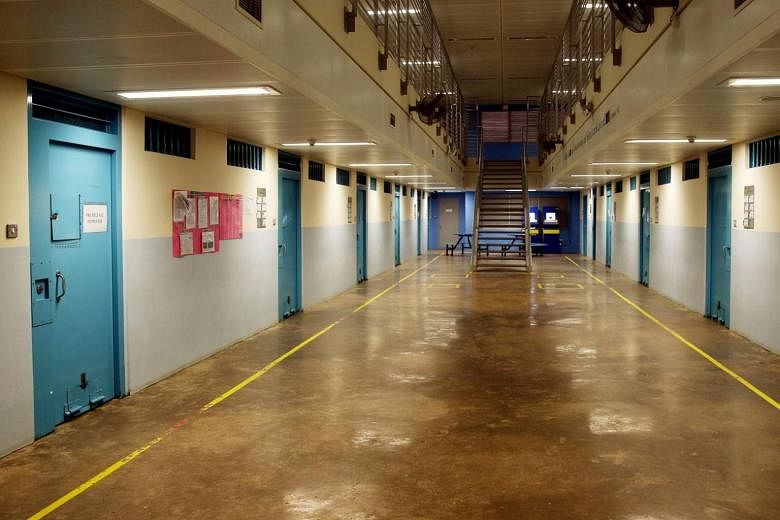More inmates are now serving a part of their jail term in the community, where rehabilitation work can be carried out in a "real-world setting".
Many of those who are part of the community-based programme are from the Drug Rehabilitation Centre (DRC), with 999 going through the programme last year, more than double that in 2011.
In addition, about 800 to 1,000 penal inmates, who include reoffenders, serve in this programme at the tail end of their sentences.
This typically makes up about 10 per cent of the total inmate population, who are placed in the home detention, work release and halfway house schemes.
The offenders, however, must stick to curfews and some may have electronic tagging.
Singapore Prison Service (SPS) community corrections command director Rockey Francisco Jr said for inmates to cope with life after prison, they have to be eased into their "normalised everyday environment with some hand-holding".
"This is the way to go if we want to reduce reoffending," he said.
"The prison environment is always going to be artificial and controlled. Time is suspended, and you are removed from your problems."
With more public acceptance of community-based programmes, the hope is to expand such programmes to include more inmates.
However, there are practical challenges, such as a shrinking prison workforce and a possible lack of facilities at halfway houses, said Assistant Commissioner (AC) Francisco.
The 2,000-strong community corrections command, which was formed in 2014 to further its "prison without walls" concept, includes both uniformed and civilian staff.
Home Affairs and Law Minister K. Shanmugam said in 2015 that the Home Team agencies may have to cope with a higher load in the face of a shrinking local workforce.
Said AC Francisco: "We can redeploy officers (to community corrections). But it is unlikely that this will grow proportionally with the number of inmates we expect to have in these programmes."
There will also be physical limitations, such as the number of bed spaces available at halfway houses.
There are currently eight halfway houses working with the SPS, with the bigger ones housing up to 120 offenders and the smaller ones taking in only about 20.
The halfway houses also see walk-in cases, and several ask to stay on after their six-month programme ends, said Mr Vincent Tan, a liaison and training manager at The Helping Hand.
"The end goal is for them to re-integrate into society, but some could take a few years to get their footing back," he said.
"We can't chase them out; we still have to give them the chance."
Mr Tan, who supports the expansion of the community-based schemes, said that the halfway house has "some scope" to convert more rooms into dormitories.
There are now around 90 beds at The Helping Hand's Upper Serangoon Road premises.
AC Francisco said SPS would have to tap technology to improve operations and deal with manpower constraints.
For instance, former offenders may be able to have video calls with their officers in the future instead of meeting face to face.
There is also potential to customise the duration and intensity of the programmes for each inmate, based on the number of years of drug addiction, type of drug abused and other factors, he added.
Already, officers have assessment tools to predict the risks and needs of offenders.
AC Francisco said: "At the end of the day, we want the inmates to learn individual responsibility and have the motivation to change."


